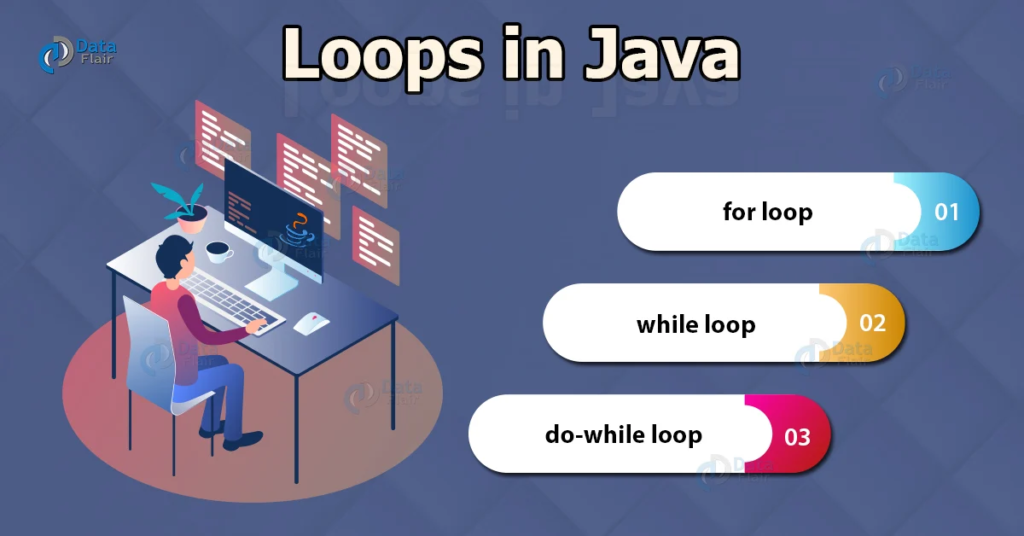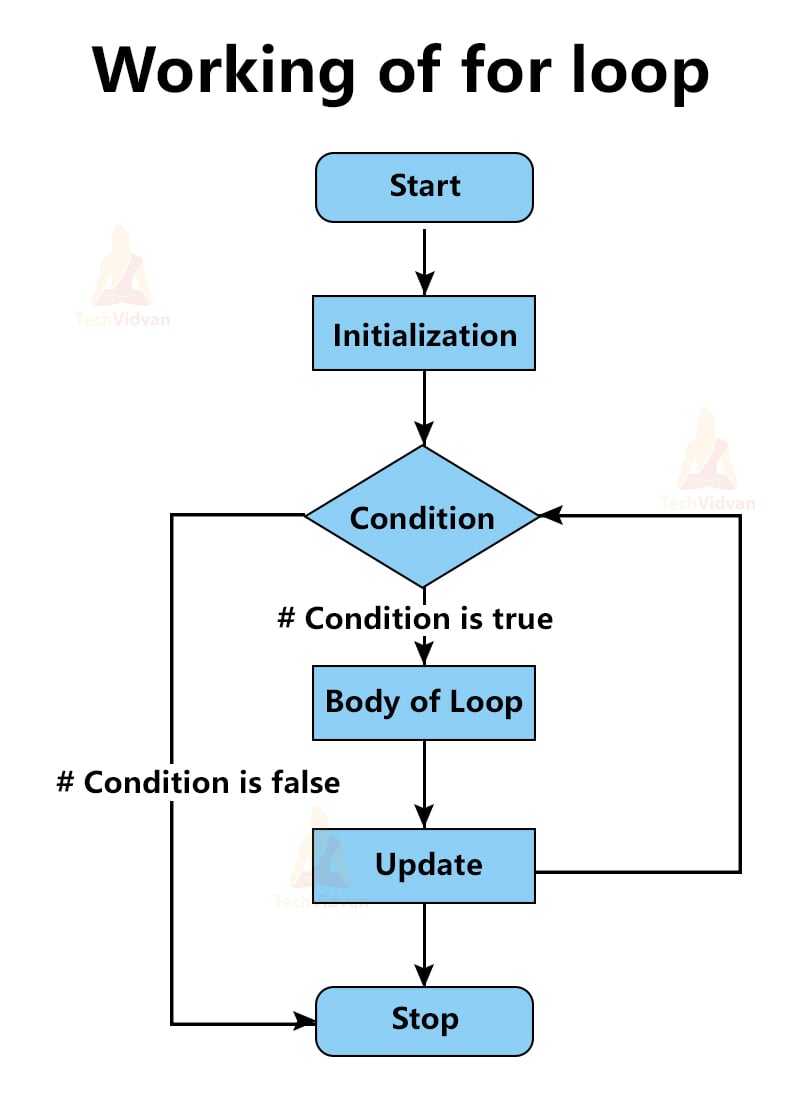Marvelous Info About What Are The 3 Different Types Of For Loops

Loops Valuable Types Of In You Need To Know, 55 OFF
Unlocking the Power of Loops
1. Why 'For' Loops Are Your Programming Buddies
Let's talk about something every coder encounters sooner or later: loops. Specifically, the fabulous 'for' loop. Think of a 'for' loop as your trusty robot assistant, tirelessly repeating tasks you'd rather not do manually. Like, say, printing a list of names, calculating taxes for a bunch of employees, or even just counting to a hundred. No more tedious typing! 'For' loops automate the process. But with great power, comes a little bit of complexity. So, what exactly are the different flavors of 'for' loops you might run into? Buckle up; we're about to explore them!
The beauty of 'for' loops lies in their versatility. They're not just about counting from 1 to 10; they can iterate over collections of data, handle complex conditions, and even nested within each other to create intricate algorithms. Mastering 'for' loops is a fundamental step in becoming a proficient programmer. It's like learning to ride a bike; once you get the hang of it, the possibilities are endless!
Imagine you have a shopping list. You could read each item out loud, one by one. That's essentially what a 'for' loop does with data. It takes a collection (like that shopping list, or an array of numbers), and it performs a specific action on each item in the collection. And the best part? It does it automatically, saving you time and effort. Pretty neat, right?
So, while the concept of a 'for' loop is fairly straightforward — repeat something a certain number of times — the execution can vary depending on the programming language and the specific needs of your code. Now, let's dive into the different types we often see and how each one brings something unique to the table.

Loops In Java (with Example)
The Classic 'For' Loop
2. The Anatomy of a Classic
This is the 'for' loop most people learn first. It's the OG, the tried-and-true method. It involves initializing a counter, setting a condition, and incrementing (or decrementing) the counter. Think of it as a little engine that drives the loop forward.
Let's break that down a bit more. The 'initialization' step is where you give your counter a starting value, usually 0 or 1. The 'condition' is a check to see if the loop should continue running. For instance, "keep going as long as the counter is less than 10." And finally, the 'increment' step is where you update the counter, usually by adding 1 to it. This ensures the loop eventually stops, preventing an infinite loop (which, trust me, is no fun!).
A typical example might look something like this (in a generic language): `for (int i = 0; i < 10; i++) { // do something }`. Here, `i` is our counter, initialized to 0. The loop continues as long as `i` is less than 10, and after each iteration, `i` is incremented by 1. Simple, effective, and incredibly common.
This type of 'for' loop is fantastic when you know exactly how many times you need to repeat something. You have precise control over the iterations, making it perfect for tasks like array manipulation, numerical calculations, and anything where you need a predictable, repeatable sequence.

The 'For-Each' Loop
3. Making Iteration Easier
Also known as the enhanced 'for' loop or the 'for...in' loop in some languages, the 'for-each' loop is designed to iterate over elements in a collection (like an array or a list) without the need for a counter. It's like a gentle stroll through your data, rather than a race against the clock.
Instead of managing a counter, the 'for-each' loop automatically retrieves each element from the collection, one at a time, and makes it available within the loop's body. This simplifies the code and reduces the chances of off-by-one errors (which are surprisingly easy to make with classic 'for' loops).
For instance, in Java, it might look like this: `for (String name : names) { // do something with name }`. Here, `names` is a collection of strings, and `name` will hold each string in the collection, one at a time, as the loop iterates. No counters, no explicit indexing, just pure data processing!
The 'for-each' loop is ideal when you need to process every element in a collection and the order of processing isn't critical. It's cleaner, more readable, and less prone to errors than the classic 'for' loop when dealing with collections. However, it doesn't give you direct access to the index of each element, so if you need that information, you might need to revert to the classic 'for' loop.

CHAPTER 21 LOOPS Ppt Download
The 'While' Loop in Disguise
4. Condition Based Iteration
Okay, this one is a little sneaky. The 'while' loop isn't technically a 'for' loop, but it can often be used to achieve similar results, especially when the number of iterations isn't known beforehand. It's all about meeting a condition.
Instead of initializing a counter and incrementing it, the 'while' loop simply checks a condition before each iteration. If the condition is true, the loop executes. If it's false, the loop terminates. This makes it perfect for situations where you need to repeat something until a certain event occurs or a certain state is reached.
Here's a simple example: `while (temperature > 20) { // cool down the system }`. In this case, the loop will continue to run as long as the temperature is above 20 degrees. Once the temperature drops to 20 or below, the loop will stop. It's all about responding to changes in your program's state.
While 'while' loops aren't technically considered one of the "3 different types of for loops", they serve a similar purpose of repetitive execution. Sometimes 'while' loops are ideal if you need to have a loop, but also it is depended to certain condition rather than a count. 'While' loop is more appropriate than 'for' loop.

Which Loop Should You Choose? A Quick Guide
5. Choosing the Right Loop for the Job
So, you've got three types of loops at your disposal: the classic 'for' loop, the 'for-each' loop, and the sneaky 'while' loop. How do you decide which one to use? It really depends on the specific problem you're trying to solve.
If you know exactly how many times you need to repeat something and you need precise control over the iteration count, the classic 'for' loop is your best bet. If you're working with a collection of data and you need to process each element without worrying about the index, the 'for-each' loop is the cleaner and more readable option. And if you need to repeat something until a certain condition is met, the 'while' loop is the way to go.
Of course, there's often more than one way to skin a cat (or, in this case, write a loop). Sometimes, you can even use a 'for' loop to mimic the behavior of a 'while' loop, or vice versa. The key is to choose the loop that makes your code the clearest, most concise, and most maintainable.
Ultimately, the best way to learn which loop to use in different situations is to practice. Experiment with different loops, try them out in various scenarios, and see which one feels the most natural and effective. The more you code, the better you'll become at choosing the right loop for the job. And remember, there's no shame in looking up examples or asking for help. We've all been there!

Loops And Its Types At Esther Robbie Blog
Frequently Asked Questions (Loop Edition!)
6. Your Looping Questions Answered
Still scratching your head about 'for' loops? No worries! Here are some common questions and hopefully helpful answers.
Q: What happens if my 'for' loop condition is always true?
A: Uh oh, you've created an infinite loop! Your program will keep running the loop forever (or until it crashes). Make sure your condition eventually becomes false!
Q: Can I break out of a 'for' loop early?
A: Absolutely! Most languages have a `break` statement that will immediately exit the loop, regardless of whether the condition is still true.
Q: What's the difference between a 'for' loop and a 'do-while' loop?
A: A 'do-while' loop is similar to a 'while' loop, but it guarantees that the loop body will be executed at least once, even if the condition is initially false. The condition is checked after the first iteration.
Q: Can I nest 'for' loops inside each other?
A: Yes, you can! This is often used to process two-dimensional arrays or to create more complex patterns. Just be careful not to nest too many loops, as it can make your code difficult to read and debug.